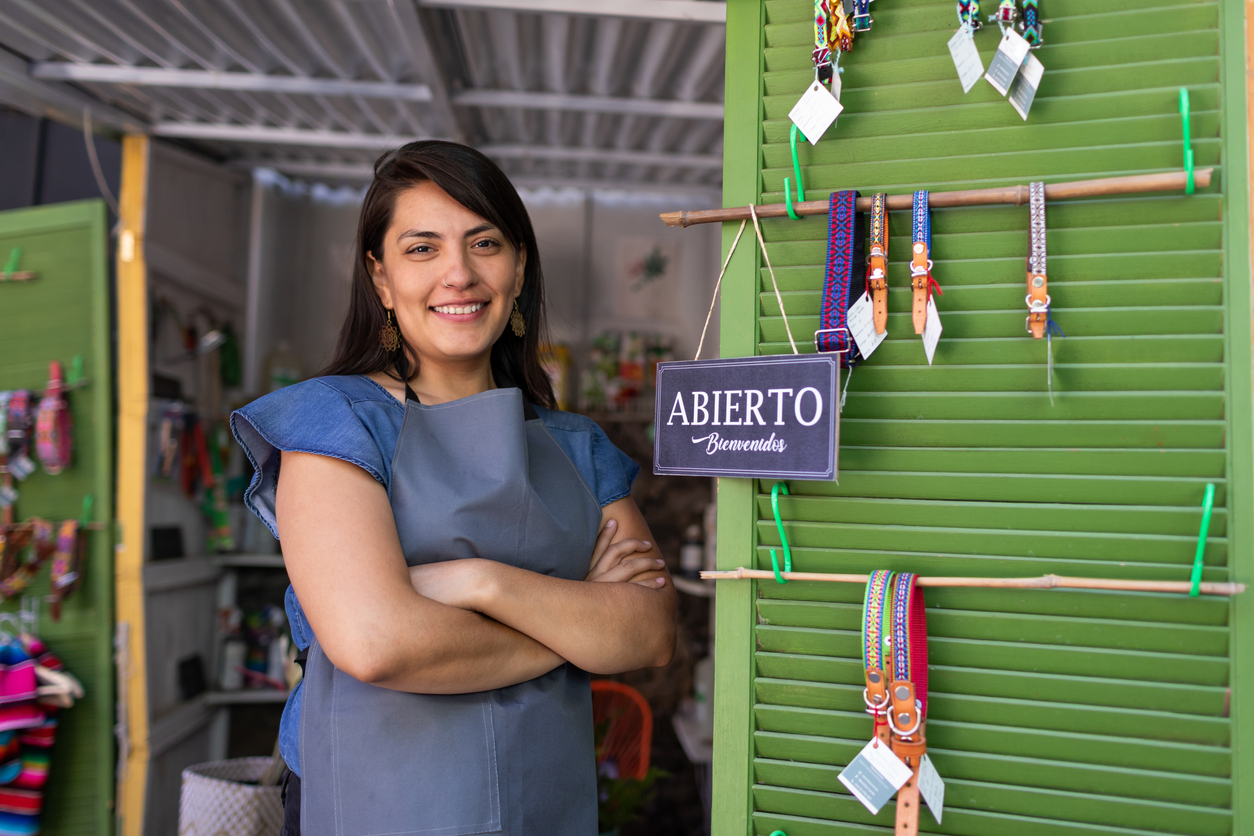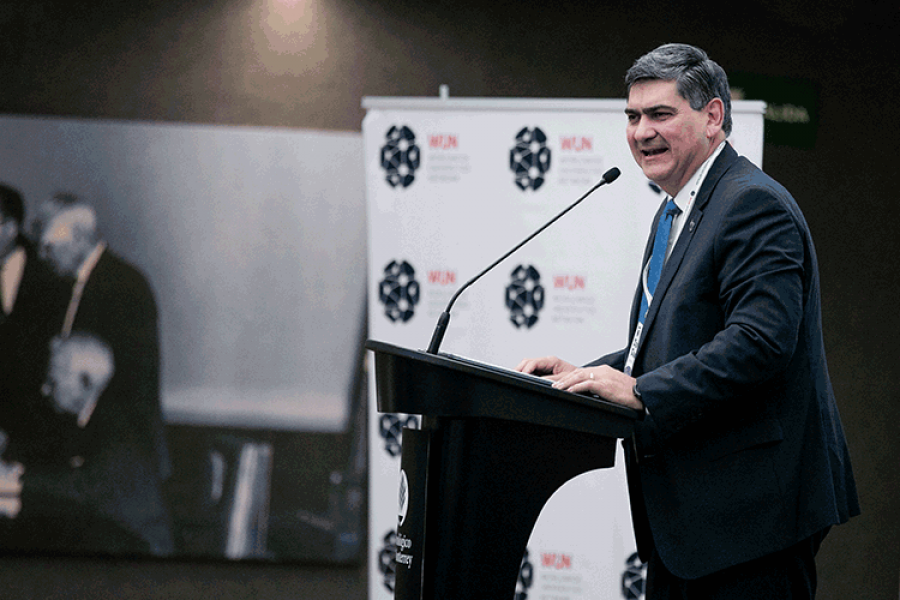Latin American women entrepreneurs start their businesses using their own or their family’s savings. They have to take the risk of putting all their assets at stake because the financial sector has forgotten them.
According to a study carried out by the FAIR Center for Financial Access, Inclusion, and Research from Tecnológico de Monterrey and Pro Mujer, 73% of women entrepreneurs in Latin America cannot access support from financial institutions because they face gender gaps, stereotypes, and a lack of financial tools and financing tailored to their needs.
The report Women Entrepreneurs in the Missing Middle and their funding options was carried out in Mexico, Argentina, Brazil, Bolivia, Peru, and Colombia by interviewing and surveying 290 women starting their own business.
What is the Missing Middle?
Latin American women are the most enterprising in the world, according to the list from Global Entrepreneurship Monitor.
They own small and medium enterprises (SMEs) and create 67% of the job opportunities in the region. Even so, they’re financially forgotten.
“Women-owned businesses are right in the middle. They aren’t big enough, nor small enough to access funding. For micro-businesses, there are micro-credits, and for large companies, there are investment funds, but there aren’t any offers of funding for SMEs,” explains Carmen Correa, CEO of Pro Mujer.
This credit gap is known as the Missing Middle, the study reports.
In numbers, the financial shortfall faced by female entrepreneurs is 5 billion dollars for micro-enterprises, while it’s 93 billion dollars for SMEs, according to the International Finance Corporation.
Why aren’t there any funding offers for Latina women’s SMEs?
The Missing Middle isn’t the only gap faced by women entrepreneurs in the region. Stereotypes and a lack of economic instruments and valuable offers tailored to their needs also prevail, explains Natalia Wills Gil, Global Manager for Representation and Gender at Pro Mujer.
For example, investors believe that women entrepreneurs don’t dedicate enough time to their start-ups and are less financially literate and self-confident and are more risk averse.
The concept that women avoid risks is an (unfounded) stereotype that plagues female entrepreneurs seeking access to investment mechanisms, Wills explains:
“More than half of Latin American women invest all their savings, or even their own assets, into starting a business and keeping that business afloat. If that’s not risk-taking, I don’t know what is.”
On another note, banks don’t consider their start-ups as companies, but as projects, since there’s a stereotype that they have to stay home and devote themselves to their children.
Only 13% of Latin American women entrepreneurs devote all their time to their businesses. The rest combine it with other work or family activities, such as studying and formal employment, the study revealed.
This has to do with a lack of education. It’s still not understood that men should be involved in household chores, the experts agreed.
What’s more, they face requirements from banking institutions. For example, they don’t have a credit history for their businesses because 60% are informal and 59% use their personal accounts for their business.
The businesswomen in the study explained that they use their personal credit cards to fund themselves and pay interest rates of 8% to 10%.
Others, to avoid being mistreated by banks, prefer to borrow from other non-banking institutions with high interest rates.
“Financial institutions continue to treat people based on how they dress and their gender. This is why women entrepreneurs aren’t acquiring as much value as they could,” explains Natalia Wills from Pro Mujer. One of the entrepreneurs from the study recounted her experience of being discriminated against by a bank for being an Afro-descendant and female.
Financial institutions blame users for not meeting their requirements instead of adjusting their metrics, explains Felipe Pérez, Director of the FAIR Center at Tec de Monterrey’s Business School.
“If formal financial services aren’t optimal and informal financial services are, they should adapt their services to the needs of entrepreneurs. For example, if group savings schemes have been working for years, they can find a way to create a service that meets those needs or fine-tunes the system,” he says.

Four key points to addressing the Missing Middle problem
The study’s experts summarize this situation in four key points:
- Women are less risk-averse than people think. However, financiers take into account the risks associated with the amount of time dedicated to entrepreneurship, sacrifice of spaces or relationships, and the company’s social approach.
- Women experience inequality when accessing business loans. Certain barriers that perpetuate this situation are a lack of financial literacy, high interest rates, and their lack of flexibility.
- There is still a strong need for entrepreneurial spaces for women and financial solutions with gender perspective in order to grow.
- Women entrepreneurs are looking for smart capital: not just loans with flexible rates, but a financial service experience in which they feel valued and understood.
Infrastructure and equipment to increase your production capacity
What do female entrepreneurs need funding for?
70% of Mexican women entrepreneurs seek funding for their businesses and more than half of them are looking for amounts between 6,250 and 150,000 US dollars, according to a study carried out by Value for Women in Mexico in 2019.
The study from Pro Mujer and Tec de Monterrey describes the amount of capital required by women entrepreneurs in Latin America as between 17,000 and 200,000 US dollars, and they’re seeking financial loans that are accessible in terms of between 36 and 60 months.
Women entrepreneurs want this financial capital to invest in advertising, marketing, and process automation.
However, these women aren’t just looking for financial help. 25% of female entrepreneurs in Latin America said they need educational content, courses, and support networks.
How can we address the Missing Middle problem?
Organizations such as Mastercard, Village Capital, Konfío, and the Espinosa Yglesias Study Center were present during the presentation of the study’s results to address the problem from every direction: academia, Fintech, investors, and business accelerators.
“We don’t want to just theorize, but rather see how we can make something tangible from the conclusions, practical solutions. That’s what we’re going to build,” says Natalia Wills Gil, Global Manager for Representation and Gender at Pro Mujer.
Points for addressing the problem include:
- Creating spaces for women
- Specialized consultations
- Financial education programs for acquiring credit
- Support networks for women to strengthen their projects, as well as empowering themselves
- Developing flexible financial services adjusted to the capital needs of women entrepreneurs


















